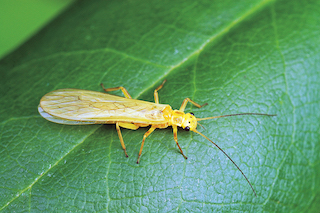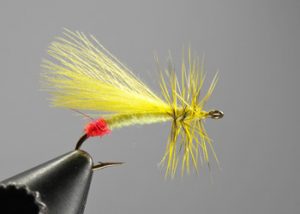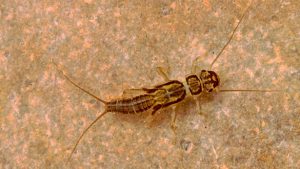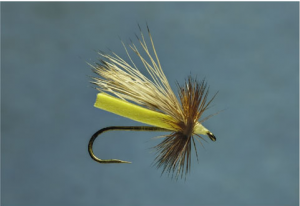
April is one of the busiest months of the year for hatches and provides a smorgasbord of bugs for our finned friends. It’s also when we begin to see the change in color schemes on adult aquatic insects.
Aquatic insect adults are not only great sources of food for fish but also for birds. As a matter of fact, when you begin to see large numbers of swallows gather above the water and swooping down to the surface, get ready. The hatch is beginning. Once the bugs have safely made it off the water, nature helps take care of them with appropriate camouflage to blend in with streamside trees and vegetation.
In the winter and early spring, most of your aquatic insect adults are black, grey, or some other dark color. They can better blend in with the dark, bare branches around the water. As we get later into spring and things begin to bloom, you begin to see more light- colored insects, such as tan and yellow. By the time summer rolls around, almost all of the adult insects are brighter yellows and greens to blend in with the abundant vegetation. And in the fall, you see more bugs with reds and oranges. There are of course plenty of exceptions to this but it’s a good guideline to follow with fly selection if you don’t know exactly what’s hatching.
So, April is a transitional month for color. Early in the month, we’re seeing the tail end of some of the darker bugs like Quill Gordons and Blue Quills, and by the end of the month we’re starting to see yellow bugs like Sulphurs and Little Yellow Sallies.

Most of the hatches in the early part of the month are sparse and can be covered with generic flies like a Parachute Adams. The first hatch of significance in April is the Little Yellow Sally stonefly. It is one of the most prolific hatches in the Southern Appalachian Mountains, beginning usually around the third week of April and lasting well into July.
Unlike mayflies and caddisflies, stoneflies do not hatch in the water. Rather, the nymph will crawl out of the water onto a rock before hatching. Pay attention when you are on the water, and you’ll probably notice empty stonefly cases on exposed stream rocks. This means that the adult stonefly is not nearly as important to the fly fisherman. The adults aren’t as available to the trout. You should focus more on imitating stonefly nymphs. For dry flies, focus more on the stage when it returns to the stream to lay eggs. You’ll notice that many of the adult Sally imitations are tied with a red butt for that very reason. It imitates the egg laying stage.

Stoneflies are often large bugs but that isn’t the case with the Little Yellow Sally, as suggested by the name. These are commonly found in size #16 and are typically a very bright yellow, and sometimes chartreuse. They tend to hatch sporadically through the day and return to the water in the evening to lay eggs. Typically, the later in the hatch it is, the later in the day they will return to the water. In April, you may see them dive bombing the water to lay eggs in the early evening. In late June, that’s probably not going to happen until almost dark.

There are a number of good imitations for the adult Yellow Sally. A yellow Neversink Caddis is one of my favorite “searching patterns.” For the nymph, you’ll want something tan to yellow in color. A small Tellico nymph or even a Hare’s Ear nymph should do the trick. And again, if you’re fishing when they’re laying eggs, something with a red butt can be very effective. Just plan to stay out late!
Learn more about Smoky Mountain hatches and flies in my hatch guide.

